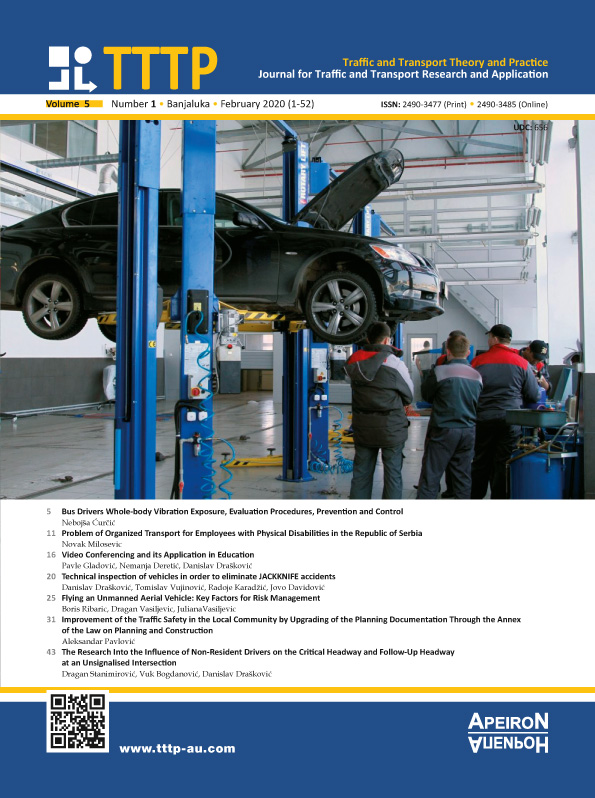Flying an Unmanned Aerial Vehicle: Key Factors for Risk Management
DOI:
https://doi.org/10.7251/JTTTP2001010RAbstract
Only theoretical training of drone operators is not sufficient for safe integration and use of drone aircraft both in controlled and uncontrolled air space.
Based on research and analysis of incidents caused by the use of drone aircraft during 2018. The global level can conclude that most of the incidents have been performed because of unskilled handling of drones, even though the persons who managed them were theoretically trained and possessed of drone management licenses.
Purpose – for the purpose of mitigation of the risk of adverse effects of human and material resources in the work, the analysis of the Drone management.
Design/methodology/approach – decision on which of the following key factors for risk assessment achieves the greatest impact on the safe handling of drone aircraft has been carried out by using the methods of analytical hierarchical processes, i.e. “fuzzy”Expanded AHP method based on”fuzzy”triangular numbers.
Findings – Based on the results of the research, it concludes that the alternative – “a terrorist and practical training for the safe handling of drone aircraft” is essential for the safe handling of drone aircraft in the second place The ranked alternative “the need for knowledge and skills of sports pilots” in third place is the ranked alternative “only practical training is needed,” in the fourth place the alternative is “only theoretical training is needed” and the fifth match is a ranked alternative “is not Theoretical or practical training. “
Practical Implications – established frames to increase the security of flying drones through an obligatory theoretical and practical training of drone operators.
Social Implications – reduced risks of occurrence of adverse effects on human and material resources.
